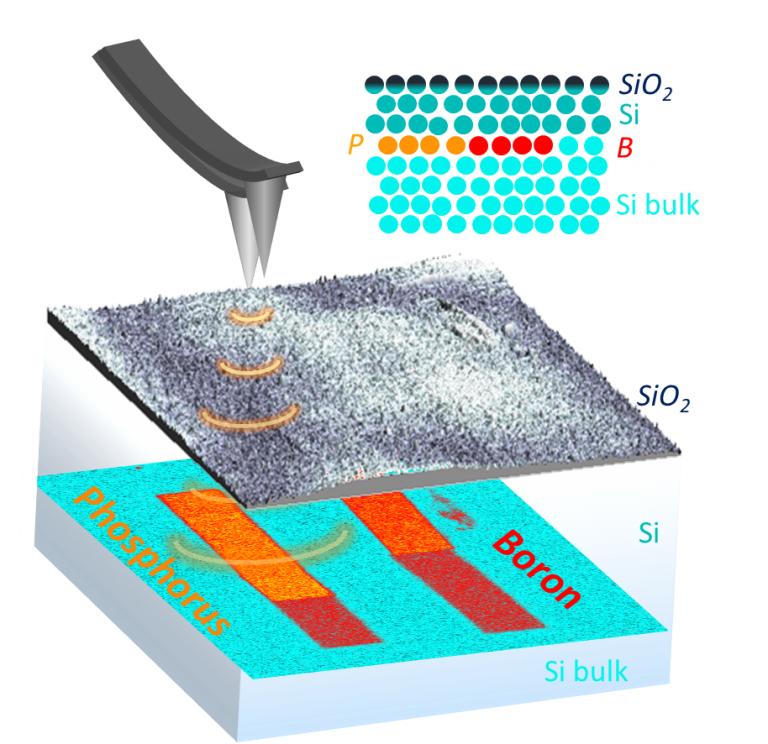Revealing the quantum structures of integrated circuits
5 August 2020
New research has demonstrated that the secrets of the tiniest active structures in integrated circuits can be revealed using a non-destructive imaging technique.

UCLQ researcher Proffesor Neil Curson and his group from UCL, with a team of international colleagues at JKU and Keysight Technologies (Austria), ETH/EPFL/PSI and IBM Research - Europe (Switzerland) have demonstrated that broadband electric force microscopy can be used to non-destructively image dopant structures in silicon chips.
The results, published in the journal Nature Electronics, demonstrate that the technique can take pictures and resolve as few as 200 dopant atoms even if they are hidden below the same number of Si atoms. It can tell the difference between certain flavours of dopant atoms, and can also provide information about the way charge carriers move through the structures and about atomic-sized ‘traps’ that can stop them from moving.
According to Professor Neil Curson, who leads the group at UCL said: "This research could not have come at a better time for the massive world-wide effort to make smaller electronics or quantum computers in silicon. While the success in making components smaller and more complicated has been spectacular, the technology required to actually observe what is being made has not been keeping up. This has become a major problem for quality control in silicon chip manufacture and for information security, when you can’t see what’s inside the chips you are making or buying. Our new research will help solve many of these issues.”
Read the full story at UCL EEE.
 Close
Close

